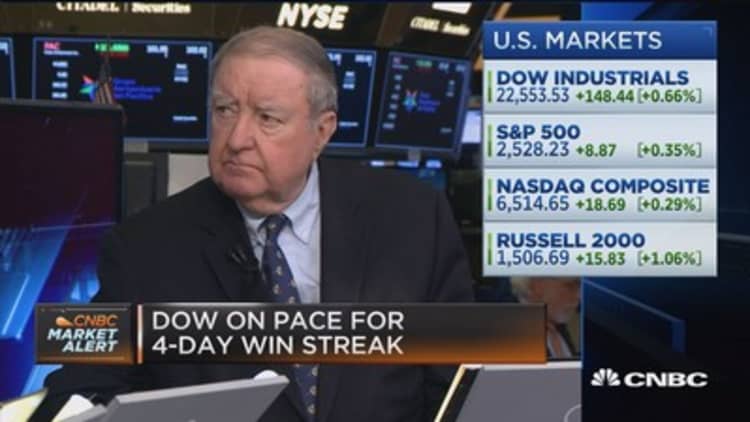
U.S. stocks kicked off the fourth quarter on a high note and it looks like they will perform well for the rest of the quarter, closely followed trader Art Cashin told CNBC on Monday.
The Dow Jones industrial average, , Nasdaq and Russell 2000 all closed at record highs on Monday, the first day of the quarter.
Cashin said a number of things are at play, including "new money" coming into the market for the new quarter and the market's determination that the Las Vegas shooting was probably a lone-wolf situation.
Plus, when the market hits highs in September, which is statistically the market's worst-performing month, stocks typically finish the year just fine, said Cashin, the director of floor operations for UBS Financial Services.
"You put most of that stuff together and some of the old favorites rallying here, we're up at record highs again, and it looks like the last quarter is going to be good," Cashin told "Closing Bell."
However, there is one "interesting" thing to watch, he said, and that's the market's reaction to the unwinding of the Federal Reserve's balance sheet, known as quantitative tightening.
The Fed expects to begin to roll off its $4.5 trillion balance sheet in October. Most of those assets consist of the Treasurys and mortgage-backed securities it acquired under a program known as quantitative easing.
While it will only be a "token amount," there still may be a market reaction, Cashin said.
"When we had the taper tantrum they hadn't even done anything yet," he said. "They had just threatened to taper, so markets can react to what they think is coming."
In 2013, bond yields spiked and markets reeled after the Fed announced it would ease and then eventually end its bond-buying program.
— CNBC's Fred Imbert and Jeff Cox contributed to this report.


